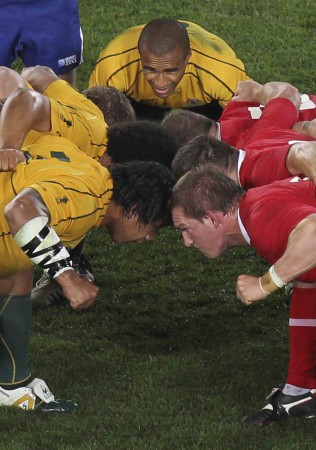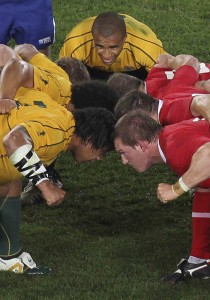There’s lots of talk about the state of the scrummage in the modern game. Whenever the topic is brought up, strong opinions on how this should be remedied follow, writes David Flatman.
Nobody’s theory ever meets with universal acceptance, so if uproar and protest is likely whatever the changes, why not be bold? 
The two problems seem to be the scrum itself and how regularly it hits the deck or slews sideways or spins in a circle, and the refereeing of the thing.
Recently I was penalised for ‘backchat’ after making what could only be called a jovial comment. There was no swearing, no raising of my voice and no argument, but back we went. At the time I was livid, but I think the ref felt under pressure to keep the scrums tidy and reacted as if backed into a corner. I certainly wouldn’t want to do his job.
This anxiety is surely bred from the number of things a referee is told not to allow in a scrum. This list is staggeringly long and impossible to obey without a large margin for error. The result? Just over half of scrums now make it to completion.
Scrummaging, like marriage, appears to be an institution so eroded by what we blindly perceive as evolution that it’s in danger of dying out. There are too many laws and too many ready-made cop-outs for nervous referees.
The bravest move – if an increase in completed scrums were a priority – would be to remove the hit. I know, sacrilege. However, get the packs to almost fold into an engaged position like the old days, check that the props are angling toward the straight head and that the binds are reasonable enough, and let the contest begin.
This would eliminate the ‘hit-and-go’ technique that favours the side putting the ball in and would reduce the likelihood of the defending team collapsing under the early pressure.
As long as the ball was put in straight – and my mum could referee that – it would still be a contest, but one based around the principles of tightness, cohesion and strength.
Scrums would probably be slightly longer as a result, but at least they won’t all end in free-kick after penalty after free-kick, which bores us all.
The other benefit is the fatigue that the prolonged time under tension would inject into the legs of the big men up front. Sure, it’s grim to be knackered, but knackered men leave holes and holes mean breaks. So the game wins.
I don’t suppose this will happen in my rugby lifetime, but once I’m done at the coalface I’ll go back to being a fan. And I want something to watch. I want to see monstrously proportioned men trying to screw each other into the ground, I want to see back-lines attacking from a stable base; I don’t want to spend my Saturdays listening to the whistles of referees thrown into a world nobody would expect them to understand.
Make it simple for them and, at the same time, keep it brutal for us.
This article appeared in the March 2012 issue of Rugby World Magazine.
Find a newsagent that sells Rugby World in the UK. Or you may prefer the digital edition on your MAC, PC, or iPad.
Would you like to sign up to Rugby World’s excellent weekly email newsletter? Click here.
For Back Issues Contact John Denton Services at 01733-385-170








